Anti-government crowds who took to the streets across Iran in the past few years have designated Supreme Leader Ali Khamenei as the real enemy of the people, describing him as a “murderer” and his leadership as “illegitimate.”
As the mostly clerical leadership is currently facing its deepest challenges since 2019, slogans chanted against the 83-old Khamenei have become increasingly radical, sometimes crossing into the territory of sexual obscenities.
“Khamenei Is a Pimp” and “F…k the Leadership” were chanted by students at Tehran’s Sharif University of Technology. Other slogans heard during the ongoing wave of protests, now in its 36th day, included “Our Disgrace is Our Incompetent Leader” and “Death to the Dictator, Be it Shah or Ayatollah.”

Meanwhile, protesters appear to have spared other members of the Iranian leadership such as President Ebrahim Raisi, himself a hardliner who is subjected to Western sanctions over allegations of human rights abuses when he was a judge.
The fact that protesters are focusing their anger on Khamenei is not a surprise. The supreme leader has had the last say in all state matters in Iran for more than three decades. And during his rule he has maintained a firm grip on the country’s politics and its armed forces, at times resorting to extreme violence to suppress challenges to the ruling system.
As a result, Iranian protesters now blame him for everything that goes wrong, whether their frustrations are of a social, political or economic nature.

Khamenei’s late reaction to unrest
Khamenei was slow to publicly comment on the ongoing protests, triggered by the death of 22-year-old Mahsa Amini in hospital on September 16, three days after her arrest for allegedly wearing a hijab, or head scarf, improperly.
Amid speculation about his health, Khamenei finally addressed the unrest in a speech to military graduates on October 3 in which, not surprisingly, he blamed the United States, Israel and Iranians abroad for orchestrating the disturbances. He also signaled the suppression of demonstrations would be ratcheted up if they continue.
In another speech, he took a more hardline position, saying that demonstrators who are “aligned with the enemy” had to be “dealt with by the judicial and security authorities” in what was seen as a green light for the security forces to resort to violence against the protesting crowds.

In the revolution’s early years
Before the Islamic Revolution that toppled the monarchy in 1979, Khamenei was considered an intellectual clergyman interested in poetry and music. He fought against the Shah’s rule but other figures such as Hossein Ali Montazeri, Akbar Hashemi Rafsanjani, Mahmoud Taleghani and Mohammad Hossein Beheshti enjoyed a higher status in the revolutionary clergy.
After Ayatollah Khomeini, the founding father of the revolution, came to power, Khamenei was part of a trio of young clergymen who were considered the unofficial rulers of the holy city of Mashhad.
Khamenei later raised his status among Iran’s new rulers when he was appointed Tehran’s Friday prayer leader and a member of the secretive Council of the Islamic Revolution. His status rose further following a wave of assassinations targeted dozens of Islamic Republic officials. He himself was severely injured in a bomb attack on a mosque in Tehran in June 1981 that was blamed on a leftist insurgent group. The incident left him paralyzed in his right arm.
On August 29 of that year, as his credibility among Iran’s leaders increased, he was promoted to the post of secretary-general of the ruling Islamic Republican Party, which assisted Khomeini establish theocracy in Iran.

Presidency, differences with Khomeini
Abolhassan Banisadr, the first elected president of the Islamic Republic, had rocky relations with the Islamic Republican Party and was impeached by parliament in June 1981. His successor, Mohammad Ali Rajai, was killed in a bomb blast in August.
The October presidential election brought Khamenei to the presidency at a time when the so-called left wing of the Islamic movement had a majority in parliament. Khamenei, who belonged to the right wing, was forced to choose a figure from the other side, Mir Hossein Mousavi, as prime minister. The two men’s views differed on many issues, but Khomeini forced Khamenei to reappoint Mousavi to his post when he started his second term in 1985.

These developments occurred amid heated controversies over the limits of authority of the supreme leader of the Islamic Republic and the Guardianship of the Islamic Jurist (velayat-e faqih). The notion of velayat-e faqih, a system of governance rooted in Shia Islam that justifies the rule of the clergy over the state, was enshrined into the constitution with Khomeini taking on the role of supreme leader until his death.
In an open letter addressed to Khamenei in 1988, the Islamic Republic's founding father accused the president of failing to understand the notion of velayat-e faqih and wrote that the supreme leader can issues edicts like God’s prophets. The letter was politically very costly for Khamenei, who wrote to Khomeini saying: “You are one of the few people who shine like a sun.”
Supreme Leader Khamenei
Following Khomeini’s death in June 1989, a council of clerics, the Assembly of Experts, chose Khamenei to be the new supreme leader, even though he had not achieved the required rank among Shia clerics that the constitution stipulated.
Since then, Khamenei has consistently taken hardline stances on external matters, and gradually extended the powers of the Islamic Revolutionary Guards Corps (IRGC) while promoting commanders loyal to him.

Four of the five presidents that have served under his absolute rule have posed challenges to his authority.
Akbar Hashemi Rafsanjani, a former parliament speaker and confidant of Khomeini, was elected president after Khamenei was propelled at the helm of the Islamic Republic. Khamenei opposed some of the president’s policies, including in the cultural spheres, which led to the resignation of the minister of culture and Islamic guidance, Mohammad Khatami. Other changes were made in the cabinet and top government offices.
In 1995, members of the cabinet founded the reformist Executives of Construction of Iran Party, which represented a strong minority in the parliament elected the following year. Khatami, the candidate of this party and the left wing, won the 1997 presidential election in which the supreme leader’s allies supported Khatami’s main rival, Ali Akbar Nategh-Nouri.
Crackdown on dissent
While in office until 2005, Khatami pushed for detente with the West and for more social and political freedom in Iran. But Khamenei and his allies blocked many of his reforms, imposed pressure on his administration, imprisoned political figures and closed down reformist newspapers.

Tehran’s Mayor Gholam Hossein Karbaschi, considered politically reformist and a close ally of Khatami, went on trial and sentenced to four years in prison on corruption charges. Parliament removed Interior Minister Abdollah Nouri from office and Minister of Culture Ataollah Mohajerani had to resign due to intense pressure.
Starting in late 1998, dozens of dissidents and intellectuals were assassinated by Intelligence Ministry agents in what became known as Chain Murders. And in July 1999, Iran was rocked by six days of riots triggered by the killing of a university student by police following a protest against the closure of a reformist newspaper. At least three people were killed and dozens of students “disappeared” in the authorities’ crackdown on the protesters.
In 2003, many pro-Khatami parliamentary candidates were disqualified by the Guardian Council and the Islamic Iran Participation Front, the main political party supporting the president, boycotted the vote.

Mass protests against the regime
In that context, conservative Mahmoud Ahmadinejad, who was seen by some as a protégé of Khamenei, was declared the winner of the 2005 presidential election. He faced mounting criticism over his government's management of the economy and foreign policy decisions, and later fell out with the supreme leader after reportedly trying to increase his own powers.
Ahmadinejad's disputed reelection in 2009 triggered eight months of protests -- the biggest since the Islamic Revolution. Khamenei insisted the election result was valid and ordered a crackdown on the Green Movement that saw dozens of opposition supporters killed and thousands detained.
Hassan Rouhani, a moderate who took office in 2013, negotiated a landmark nuclear deal with world powers with Khamenei's approval, but the supreme leader resisted the president's efforts to expand civil liberties and overhaul the economy.

The economic hardship suffered by many Iranians worsened after the United States abandoned the nuclear deal in 2018 and reimposed sanctions on Iran, triggering mass protests from December 2017 to January 2018.
Iran also witnessed a wave of mass protests in November 2019, prompting a bloody crackdown by the security forces that claimed the lives of hundreds of people.
Raisi’s election and the succession issue
In the 2021 presidential election, Raisi beat out a narrow field of mostly conservative candidates in a vote marked by calls for a boycott and a historically low turnout that provided ammunition for critics of the country's leadership. Still, Khamenei called the vote a defeat of "enemy propaganda" and praised people's "epic and enthusiastic" presence in the voting.
Given Khamenei's age and deteriorating health, the question of who might succeed him as supreme leader has been the subject of endless speculation. At one point he reportedly favored Raisi, but it will up to the Assembly of Experts to pick a new supreme leader. In the meantime, some protesters taking to the streets these days are hopeful that Khamenei’s death could lead to a regime change.
visit the accountability section
In this section of Iran Wire, you can contact the officials and launch your campaign for various problems




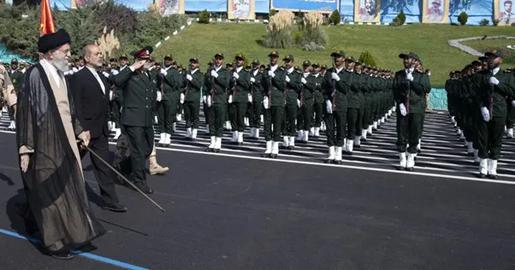





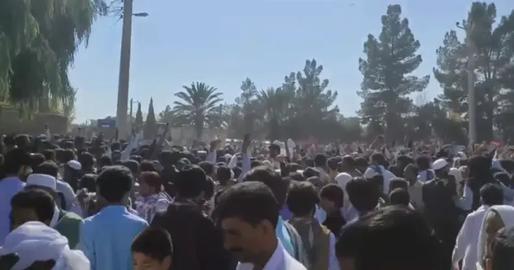





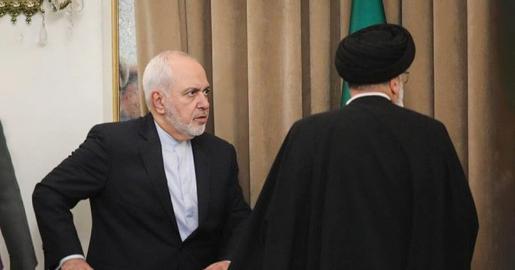
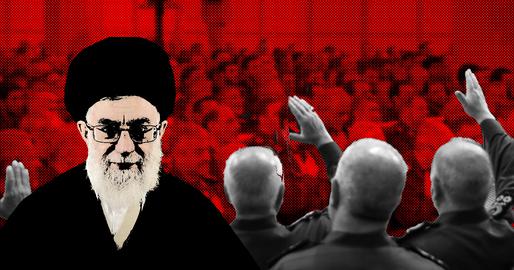






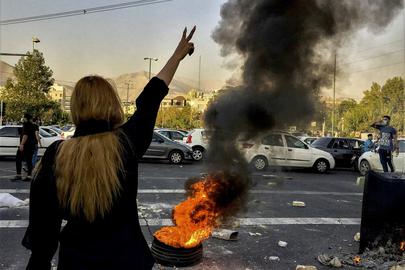
comments
Iran will look exactly the same without Khameni... Why?
1 the police are enjoying what they have been unleashed to do.
2 so are the other security services.
3 the clerics are shouting the same rhetoric and bile.
4 unless the government are charged with crimes against their own people are completely removed nothing will change. ... read more